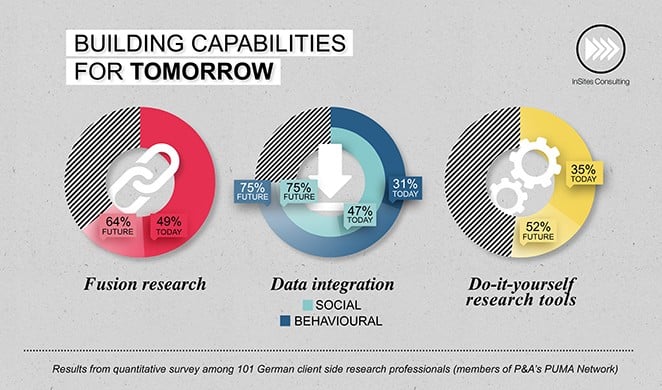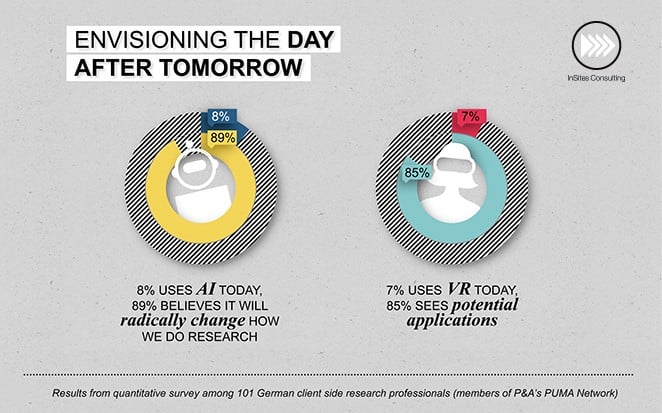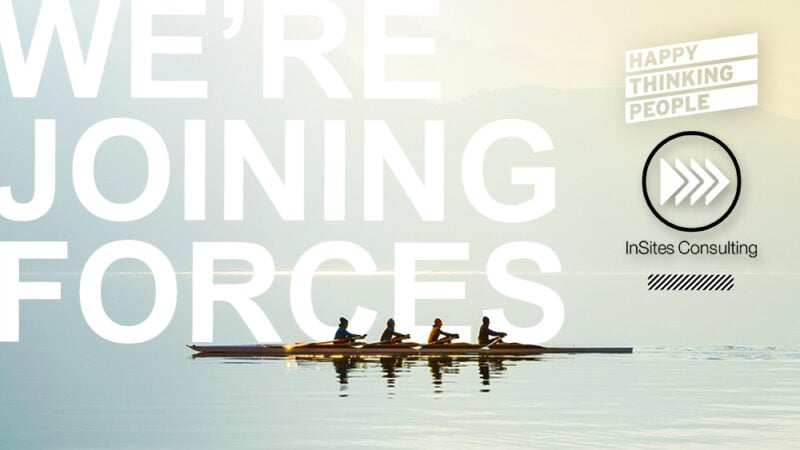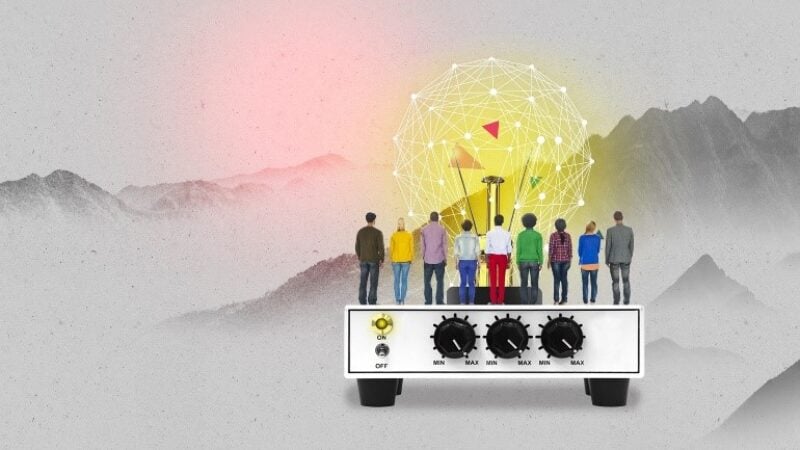Market Research (the day after) Tomorrow
In our previous blogpost, we zoomed in on the key focus points of client-side researchers today. It is clear that today’s business reality fuels the quest for more agile, automated research solutions that drive actionability. Yet which trends are on the radar of corporate researchers and insights managers, what are their plans for the (near) future and which developments do they believe will disrupt their work the day after tomorrow?
Building capabilities for tomorrow
1. Fusion of research methods
5 years ago, only 32% of all the research project conducted by our participants was a combination of different research methods. Today that’s already 49% and the predication they make is that it will grow towards 64% over the next 5 years. So, in 10 years’ time the number of ‘fusion research’ projects will have doubled. Implicit techniques, neuro research and biometric response are increasingly becoming part of that fusion or mix, with 39% of the participants already using implicit methods and 43% having experience with neuro research and biometric response. Moreover, another 46% is considering implicit and 29% neuro/biometric when looking at the near future. When talking to research professionals, 50% mentions the increased complexity of understanding consumer behavior as the main reason for this so-called triangulation of different research techniques (= looking at the same issue through the lenses of different complementary research methods).
2. Data integration
The second topic that insight teams are preparing for is data management and integration. Key data sources used today are traditional qualitative (85% in use) and quantitative (96% in use) data streams, mixed with commercial data (68%), customer service data (66%) and syndicated research (51%). And to a smaller extent, social media data (47%) and behavioral data streams (31%). Looking at the future, research users expect a boom for all data streams, especially in the usage of social media data (75% of the researchers in the sample will make more use of it in the near future) and behavioral data (growth predicted of 74% of the sample).
3. Empowering internal stakeholders to go DIY
Lastly, there is the tendency to allow internal clients to do some of the research themselves. 35% is experimenting with it today, while 52% is taking a look at it for the future. It’s interesting to see that 14% of participants states that they will never go there, which is one of the strongest rejections that we saw throughout survey in terms of new ways of working.
The main reasons for empowering internal stakeholders to do some simple and standardized research themselves are: being able to serve more internal stakeholders faster, to save money by standardization and the fact that no agency needs to be involved. Moreover, 1 in 2 believes that if stakeholders do some of the research themselves, it will be used more and integrated better in decision making.

Envisioning the Day after Tomorrow
Although only 8% uses it today, there is the shared belief that Artificial Intelligence will have a huge impact on our industry. Nobody seems to doubt its potential to radically change the way we do research, going from chatbots and smart data integration/ management to AI systems that bring us the insights we didn’t even ask for, the moment we need them.
We see the same trend in the field of Augmented and Virtual Reality. Experience with the technology and research applications is rather small, with only 7% stating having experimented with it. Yet again, 85% sees a lot of potential applications for the future, both in conducting fieldwork (testing prototypes of new products, evaluating new store lay-outs…) as in bringing consumer insights to life (e.g. ‘visiting’ the house of 10 consumers in different parts of the world).

Taking research forward
Who should be in the driver’s seat to leverage this change? According to our survey participants, it’s a joint task of agencies and client-side researchers. Agencies need to walk their talk and listen more to their clients to understand what their real challenges and needs are, while clients need to be more open about the struggles and wishes they have. It’s teamwork, we really join forces and co-create and experiment more.
So, let’s take research forward together!





